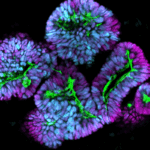Scientists Have Said That The Soul Doesn’t Die, It “Returns To The Universe.”

What happens to us when we die? It’s a question as old as time, one that has inspired countless stories, beliefs, and theories. While many turn to religion or philosophy for answers, modern science is now venturing into this age-old mystery with surprising discoveries. Could there be more to consciousness than the firing of neurons in our brain?
Recent breakthroughs suggest that the soul—our very essence—might not perish with our physical bodies. Instead, some scientists propose it returns to the universe, living on in ways we’re only beginning to understand. These findings are not just speculative; they are rooted in cutting-edge theories that blend quantum mechanics and human biology. Curious about what this means for life, death, and the nature of reality itself?
The Quantum Nature of Consciousness
Consciousness has long been regarded as one of life’s greatest mysteries. Defined as the state of awareness and self-identity, it is what allows humans to perceive, reflect, and interact with the world. Traditionally, neuroscience attributes consciousness to the intricate neural networks within the brain. Yet, as the boundaries of scientific exploration expand, theories like Orchestrated Objective Reduction (Orch OR) challenge this materialist view, proposing a far deeper and more profound understanding of consciousness.
Orch OR, introduced by Dr. Stuart Hameroff and physicist Sir Roger Penrose, presents consciousness as a quantum phenomenon. It suggests that the essence of awareness originates from quantum-level activities within neuronal structures called microtubules. These tiny, cylindrical proteins are not only structural components of neurons but, as the theory posits, may act as quantum processors. Unlike classical views that confine consciousness to brain activity, Orch OR proposes that consciousness is a process deeply embedded in the quantum fabric of the universe itself.
Central to this theory is the idea that microtubules perform computations at a quantum scale, transcending classical physics. Penrose and Hameroff argue that these quantum processes allow consciousness to persist independently of the physical brain. This bold perspective hints at the possibility of the soul or essence continuing beyond death, embedded in the universal quantum field. By reframing consciousness in this way, Orch OR opens doors to understanding not only human identity but also the interconnectedness of all existence.
How Science is Proving Consciousness is More Than Brain Activity
Recent studies suggest that consciousness may not just emerge from brain activity but from quantum processes within microscopic structures called microtubules. Found inside brain cells, these tiny cylindrical proteins appear to act as quantum processors, offering a new perspective on how awareness operates.
In 2014, researchers discovered “quantum vibrations” within microtubules. This finding challenged the long-held belief that quantum effects couldn’t survive in the brain’s warm and dynamic environment. These vibrations indicate that microtubules might support quantum-level processing, making them central to the Orch OR theory and its proposal that consciousness arises from quantum mechanics.
This discovery suggests that our awareness isn’t just the result of neurons firing but may be linked to the fundamental nature of the universe itself. Microtubules, acting as quantum hubs, could hold the key to understanding the deeper workings of the mind.
 Image source: Shutterstock
Image source: Shutterstock
Anesthesia and Quantum Coherence—A Window Into the Mind
Anesthesia has provided unexpected insights into the connection between quantum mechanics and consciousness. Researchers found that anesthetic gases disrupt quantum states within microtubules, effectively turning off consciousness. This suggests that the quantum activity inside microtubules plays a crucial role in maintaining awareness.
Another breakthrough came with the discovery of superradiance, a phenomenon where particles within microtubules work in perfect harmony, even in the complex environment of living cells. This coherence strengthens the case for microtubules as quantum processors, bridging the biological and quantum worlds.
Together, these findings reveal that consciousness is more than neural activity—it’s a phenomenon deeply connected to quantum mechanics. These discoveries not only reshape our understanding of the mind but also offer potential breakthroughs in medicine and technology, from safer anesthetics to the development of truly conscious artificial intelligence.
What This Means for Humanity and Science
The idea that consciousness may operate on a quantum level opens the door to profound implications, both scientifically and philosophically. If awareness is not limited to brain activity but instead rooted in the quantum fabric of the universe, this perspective could revolutionize fields ranging from medicine to artificial intelligence.
One of the most immediate impacts lies in the medical field, particularly in understanding anesthesia. The discovery that anesthetics affect quantum states in microtubules could lead to more precise and safer methods of inducing unconsciousness during surgeries. By targeting the quantum processes that drive consciousness, scientists may develop techniques that minimize side effects and enhance patient care.
Another transformative implication is in the realm of artificial intelligence. If consciousness arises from quantum computations, replicating such processes could be the key to creating truly conscious machines. Current AI models, based on classical computing, mimic intelligence but lack self-awareness. Orch OR offers a roadmap for bridging this gap, steering AI development toward quantum-based systems capable of experiencing awareness.
 Image souce: Pexels
Image souce: Pexels
On a broader scale, this theory reshapes our understanding of life and death. If consciousness persists beyond the physical body, it could provide a scientific basis for phenomena like near-death experiences. This perspective not only challenges materialistic views of existence but also aligns with spiritual beliefs that see the soul as eternal.
These implications compel humanity to rethink its place in the universe. Consciousness, rather than being confined to individual minds, might be an intrinsic feature of reality itself. This idea bridges the divide between science and spirituality, offering a unified vision of existence where the mind and cosmos are deeply intertwined.
Uniting Science and Spirituality
Science and spirituality have often been seen as opposing forces, each offering different explanations for the mysteries of existence. Yet, theories like Orch OR are creating a bridge between these two realms, revealing that they may be more interconnected than previously imagined. By exploring the quantum roots of consciousness, this theory brings scientific credibility to concepts traditionally associated with spirituality, such as the soul and universal awareness.
The Orch OR theory aligns with ideas found in many spiritual traditions, which view consciousness as an eternal and universal force. The suggestion that awareness may persist beyond physical death resonates deeply with beliefs about the soul’s journey and its connection to a greater reality. This scientific framework provides a fresh perspective on metaphysical experiences like near-death phenomena, offering explanations that blend empirical evidence with spiritual insights.
By merging science and spirituality, the exploration of consciousness offers a holistic view of existence—one that sees life, death, and the universe as interconnected. This perspective not only deepens understanding but also fosters a sense of awe and wonder, encouraging humanity to explore both the measurable and the mystical aspects of reality.
The Eternal Journey of Consciousness
The Orch OR theory redefines consciousness, suggesting it operates on a quantum level and may transcend the boundaries of the physical brain. This idea bridges science and spirituality, proposing that awareness is more than neural activity—it is deeply connected to the fabric of the universe.
Scientific evidence supporting this theory reveals that consciousness may not end with the body but could persist as part of a universal reality. This perspective aligns with age-old philosophical ideas, offering a new lens to view life, death, and the interconnectedness of all things.
By exploring the quantum nature of consciousness, humanity takes a step closer to understanding its role in the cosmos. This journey inspires deeper reflection on the mysteries of existence, urging us to embrace the infinite possibilities that lie beyond the material world.
Featured image source: Shutterstock
Loading...






